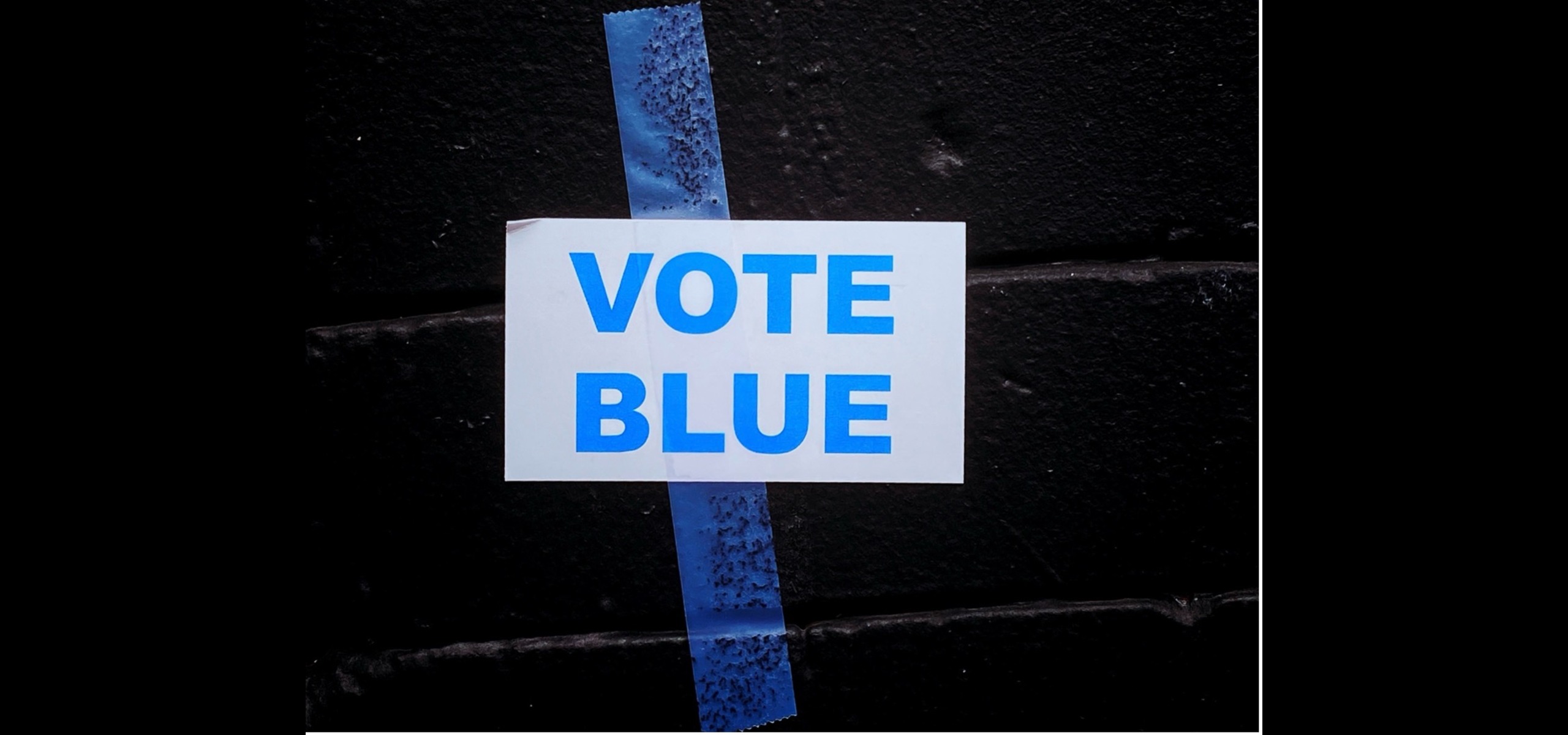A New Landscape: Why is the Democratic Party Struggling to Appeal?

As someone who identifies with the ideals of the Democratic Party, I feel let down. The party are struggling to represent the progressive values they claim. They are plagued by a lack of acceptance of new ideas and staleness at the top, coming off a disappointing defeat in the 2024 presidential elections.
This defeat didn’t come out of the blue but was born out of decades long failings and cracks within the foundations of the Party.
In the modern era, the Democratic Party has positioned itself as the party of liberal values, protecting US institutions from a rise in right-wing, neo-conservative and populist beliefs. The party has championed gay marriage and abortion rights, and climate change action, promoting inclusivity and diversity as core beliefs.
Yet it has often failed to bring about any strong advancements in these areas, instead focusing on moderation and flexibility over its values. It has failed to adapt to the new political climate, still fighting the old Republican Party and trying to appeal to a traditionally centrist electorate.
But the electorate of 21st century America is defined by division, a lack of trust in the establishment and a desire for change.
In Gallups 2024 report, over 80% of respondents believed America was greatly divided on key values. Whilst Navigator’s report saw 62% of respondents believing America’s political and economic systems need major changes and 12% believing it needed to be completely torn down.
Previously the electorate welcomed stability and continuity, with career politicians being the norm and widespread faith in the establishment. It was built on what is known as system justification. This simple psychological effect sees people defend and legitimise the existing system they grew up in, because it is familiar, even if it does harm. As long as the majority of people, overall, feel safe in the system, the fear of change will outweigh the harm that system causes.
Because of a booming economy, a growing middle class and a general hope manifested in the ‘American Dream’, most Americans did not question the inherent flaws in the system. They believed ultimately that they benefited, not appreciating the flaws in the system, how it affects others, or even how it affects themselves, simply blinded by a perceived safety.
In the present day, this illusion of safety and security is fading. Whereas once the assumption in the US that life only got better, as children born in the 1940s had a 90% chance of earning more than their parents, for those born in the 80s, only 50% earned more. Whilst once the electorate were content in justifying the system they lived under, now there is a growing anger and desire for change.
Reactance is now commonplace amongst the population. People distrust the establishment and ‘elite’, blaming them for the stagnation and negative change so many feel. Reactance theory is a key feature of this rising populist sentiment, and something that the Democratic Party has failed to understand and address.
The Democrats have stuck with the traditional structure of US politics, assuming that whatever happens your core base will vote for you because, in a two-party system, you’re ‘the better option’. They’ve put out a moderate, status quo message to appeal to the middle ground. In this time of intense desire for change this approach is clearly not working, with the Navigator Report finding that 51% of people viewed the Democratic Party as the party of the status quo, compared to only 20% for the Republicans.
While the Republicans put forward a radical outsider who effectively spoke to people’s frustrations, the Democratic establishment have thrown their weight behind insiders.
Promoting Clinton in 2016 did not work against Trump’s anti-establishment rhetoric, and, whilst Biden won in the short term, the legacy of his attempts at centre ground governing was seen all too clearly in 2024.
The Democratic establishment is dominated by these insiders who simply do not have the faith of the public anymore. It is made up of figures such as Biden or Pelosi who have been on the Hill for decades, who have spent a career riding the middle lane.
The next generation represent direct replacements, such as Buttigieg, Harris, Fetterman and Newsom. They campaign aggressively against the Republicans and the negatives of the change they represent, without representing any significant change themselves.
They take PAC donations from large corporations and interest groups that conflict with their principles. They fail to come out in strong support for Gaza and call for stronger border control. They simply do not represent the left they claim to and take their votes for granted. The party has committed to centrism and the status quo, without realising that while there is still a centre ground, it is only getting smaller, and those that remain are just as vocal in their desire for change. The blind strategy of trying to appeal to a sense of safety in the middle ground has led to compromise after compromise and allowed the right to drag ‘the centre’ towards them.
This process has been happening for a long time now, starting with Reagan’s neo-conservatism. To which the Democrats met in the middle with Clinton’s 1994 Crime Bill crime bill and free trade policies such as the North American Free Trade Agreement.
Then came the Tea Party, and the first signs of populism in the US, to which the Democrats simply continued to appeal to the centre ground, the party of stability.
Finally Trump came through, destroying the American political playbook and yet Democrats still haven’t appreciated the shift in political culture. They still have not realised how they have allowed national discourse to be pulled to the right, how defending the status quo only served to frustrate a disenchanted electorate.
Yet still the Democrats commit to this strategy. In the 2025 New York Mayoral primaries, despite a controversial history of corruption and sexual abuse allegations, and general unpopularity, many of the democratic leadership threw their weight behind Andrew Cuomo over the popular Zhoran Mamdani. Even after Mamdani’s victory, Cuomo has refused to leave the race, running as an independent on a platform that all but capitulates to Trump and splitting the NYC Democratic Party. Whilst many of the Democratic media institutions such as the New York Times have been overly critical of him.
Mamdani earned his nomination through grass roots campaigning, relying solely on individual donations, and a strong social media presence. The popularity of his campaign is clear. The Democrats must allow for an individual with strong principles and a large support have a chance. The era of restricting different views, or significant changes for the sake of the centre ground and being ‘electable’ must end.
If the Democrats are serious about being the progressive party, about being the party that addresses frustrations and issues within America then change is needed. So what must they do?
Some of the periods of greatest advancements in liberty in the US and for the Democrats came when people weren’t afraid to be radical. Roosevelt’s New Deals, that improved the right to unionise, protections for the vulnerable and an expansion of oversight for the private sector. Or Kennedy and Johnson’s civil rights progressions that criminalised segregation and discrimination and the voting rights and/or housing acts that further protected minorities against discrimination.
This is not a call to arms, looking to create the Communist Party of America. Simply a request that the Democrats open themselves up for change, allow new ideas, new people to come through the party. To stop compromising values, and playing to a centre ground that no longer wants the continuity of the status quo and no longer defines elections. This is simply an ask to remove the figures that have dominated the party for so long, who are now seen by the majority of the electorate not as symbols of stability, but of stagnation and corruption.
A party that tries to cling on to its establishment members at the cost of newer, younger ideas and people does not work. All this has led to for the democrats is a rise in populism on the right and a rise in discontent on the left. If there is to be a real challenge to the growing far-right politics in the US, the Democrats must stand their ground and stop allowing themselves to be dragged to the right in the name of compromise.
This is not to say that the liberalists of the party have no place anymore, the Harris’s, Newsom’s and Buttigieg’s absolutely have a place, they are intelligent people who have something to offer the party. But they cannot be all the party offers, they cannot continue the path set by their predecessors of compromise, they must stand strong in their values of liberalism and allow for other ideas in the party to flourish alongside them.
A united front is needed for the Democratic Party to survive, encompassing liberalists alongside democratic socialists. This cannot be the united front of old where the left wing are brought into the fold for the greater good, but a genuine, equal partnership based in a lack of compromise in the core progressive values that binds them.
Finally, the Democrats must reject ‘the swamp’, moving away from Super PACs, corruption and out of touch politicians who have been around for decades and dominate the party. They must shed the image of a party that makes little actual change, that exists in its Washington bubble, dominated by ‘elites’.

